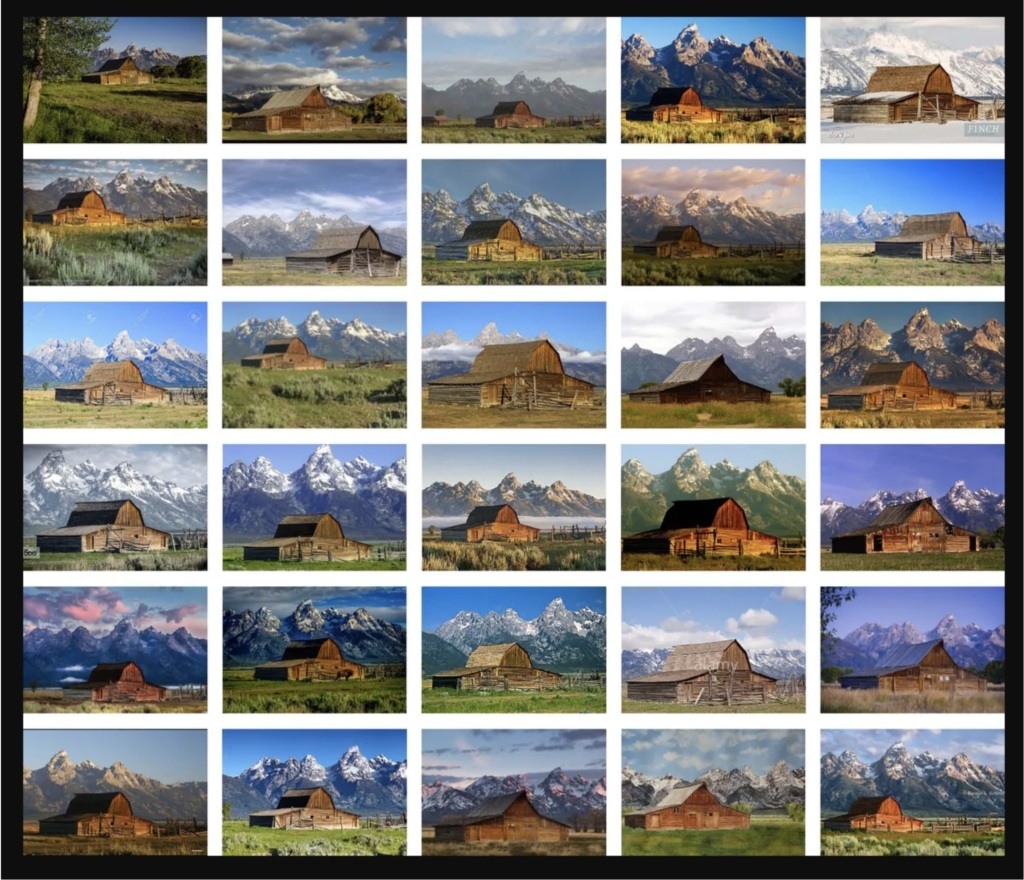This essay includes material from the July 9 edition of the Real Life newsletter; subscribe here to read each week about the pieces we’ve published and other topics.
At a 1988 conference of art historians, curators, ethnographers, and museum professionals called “The Poetics and Politics of Representation,” art historian Svetlana Alpers presented a paper on “the museum as a way of seeing.” The crux of it was that museums, by their very nature, invest the objects they display with visual interest. She calls this the “museum effect” and uses an example of a crab in a glass case she once saw in a museum as a child. In its mere presence on display in the museum was, from her child’s point of view, enough to entice her into contemplating it as a work of art and not a mere specimen, an arbitrary example.
Rather than seeing this effect as interfering with a museum’s pedagogical functions, Alpers argues that it is necessary to them. “It is very possible that it is only when, or insofar as, an object has been made with conscious attention to crafted visibility that museum exhibition is culturally informing,” she writes. Accordingly, objects in museums shouldn’t be overburdened with too much curatorial context but exhibited to maximize their visual interest. Viewers should be encouraged to follow their bliss with their eyes and, through this process, experience both an enhancement of their sense of agency and a refinement of their personal aesthetic capacities. Only after that might they learn anything about crabs.
Since everyone has social media space to fill, we can operate like museums ourselves, “curating” experiences and memories as unfolding works of art
“One measure of a museum’s success,” Alpers argues, “would seem to be the freedom and interest with which people wander through and look without the intimidating mediation between viewer and object that something such as the ubiquitous earphones provides.” That “way of seeing” — engagement unencumbered by context — is not so different from what social media encourage: We can scroll endlessly through images and videos presented as isolated fragments, looking for moments of spontaneous visual interest that we can commemorate with likes, comments, and reshares. And since everyone has social media space to fill, we can operate like museums ourselves, “curating” experiences and memories as unfolding works of art that most of all must look interesting. You can point the phone at things and conjure up the network behind the lens to impute potential significance to whatever it is you’re looking at.
Sometimes phones are treated as though they have disrupted how museums operate, causing them to radically alter themselves to accommodate the phone’s implications. But the pre-existing museum effect has also shaped how people have come to use phones. In other words, the phone, like the museum, is a way of seeing. There is a “phone effect” that changes what we perceive and implies a certain kind of interest. How people use phones in museums is not so much disruptive as it is clarifying of museums’ already established complicity with consumerism.
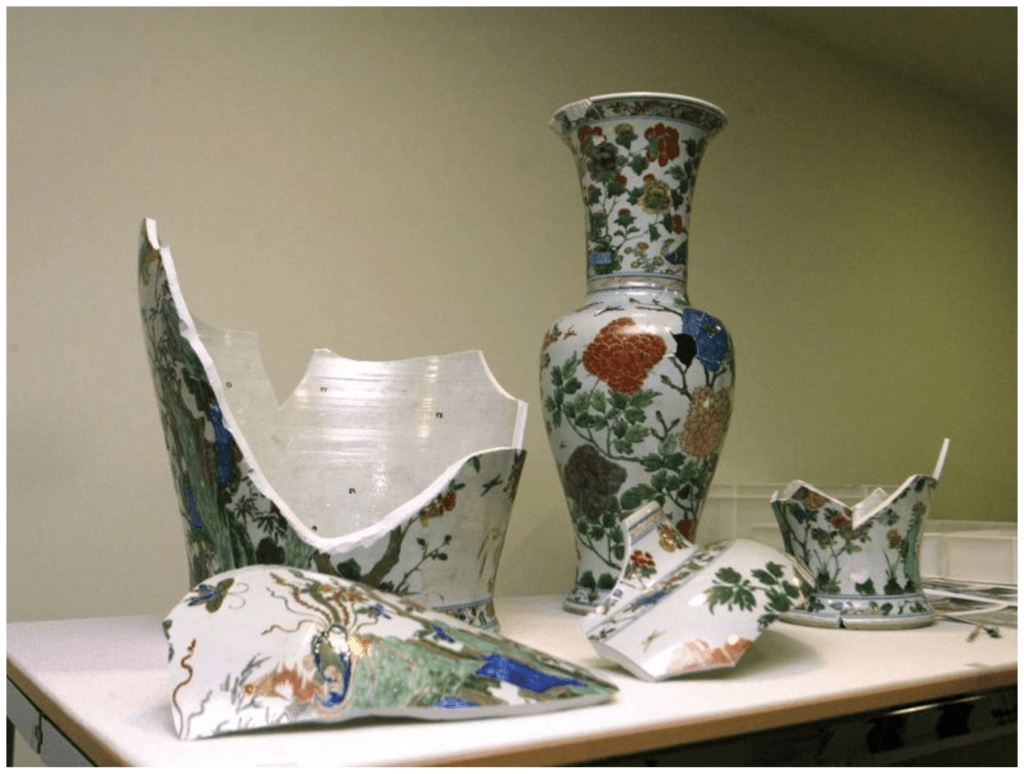
At that same 1988 conference, Stephen Greenblatt — the New Historicist critic who popularized the term “self-fashioning” — proposed “two models for the exhibition of works of art”: resonance and wonder. Resonance, in his definition, is ”the power of the displayed object to reach out beyond its formal boundaries to a larger world, to evoke in the viewer the complex, dynamic cultural forces from which it has emerged and for which it may be taken by a viewer to stand.” Wonder is “the power of the displayed object to stop the viewer in his or her tracks, to convey an arresting sense of uniqueness, to evoke an exalted attention.” In other words, resonance points to the fascination of a broader context; wonder points to a fascination that seems to require no specific context.
To illustrate resonance and its reliance on context, Greenblatt mentions a nondescript vase that was once exhibited in a museum show with a label that read, “This vase broken by Marcel Proust.” That label provides “necessary” context; the broken vase is not visually interesting in its own right. But if that label were absent, it wouldn’t mean that there was no context. Instead, the context that the museum itself provides would come into focus. The “museum effect” would presumably kick in for audiences and assign the vase a somewhat confusing “visual interest” that they would have to figure out.
We might equate the “phone effect” with Instagramability, or with what in China is called wanghong, the museum effect operating at large
Such confusion often proves to be not worth trying to solve. It undermines the museum effect, which works smoothly only when the “visual interest” of an object presented without context appears to be self-evident. The museum effect, then, is a context that tries to efface itself, so that the “interest” can seem a property of the “wonder”-generating object, if not the perspicacity of the viewer. It tautologically frames “visual interest” as an unmediated given (everybody already knows what is visually interesting; it is what you see in a museum) to distract us from what structures it — the museum’s value-granting role. The museum as a “way of seeing” is really a way of not seeing how “interest” can be structured in different ways. It takes wonder and resonance as mutually constitutive. Alpers essentially claimed that wonder makes resonance possible; in effect, a museumgoer’s response to resonance, then, should be to resolve it into wonder.
The phone as a “way of seeing” builds on that, effectively harmonizing wonder and resonance: Sharing an image is both a plea for its “wonder,” or its seemingly spontaneous visual interest, and an enactment of its “resonance,” as it’s distributed on an open network that becomes its new, ever-changing context. The shared image testifies to the “complex, dynamic cultural forces” in which phone users are matter-of-factly enmeshed, as well as a user’s claim on an “arresting sense of uniqueness” within those conditions.
Usually, when thinking about the phone as a way of seeing, one identifies it with the genres of content that have emerged on social media, or with how the demand for “visual interest” has reshaped physical spaces. We might equate the “phone effect” — the context that ubiquitous networked cameras bring to whatever we see — with Instagramability, or with what in China is called wanghong.
According to Chaoyang Trap, a newsletter about Chinese culture, that word roughly translates as “internet fame.” It once applied to influencers, but it can be used more generally to describe places or practices or certain kinds of plays for authenticity. It points to “how certain sites in the city … gradually took on new significance as the background to a thousand selfies and short videos.”
These sites become at once very specific and recognizable but also extremely amenable to being taken out of context and recontextualized on social media as an indicator of status or a willingness to participate in the zeitgeist. In some respects, these places are like Alpers’s crab: They appear as decontextualized art objects whose exhibition is justified by their visual interest, which is made to seem intrinsic.
But interest is never intrinsic. By virtue of social media’s scale, visual interest on social media platforms converges with recognizability. It collects into standardized poses, aesthetics, hashtags, and locations to check in from that, taken collectively, are famous for being famous. To experience these things is to document them; if they go undocumented, they weren’t really experienced at all.
By documenting them ourselves, we can participate in this positive feedback loop, enhancing the photogenic aura around certain objects and then letting their momentum become our own, giving us a sense of our own circulation in networks, which we can’t physically experience.
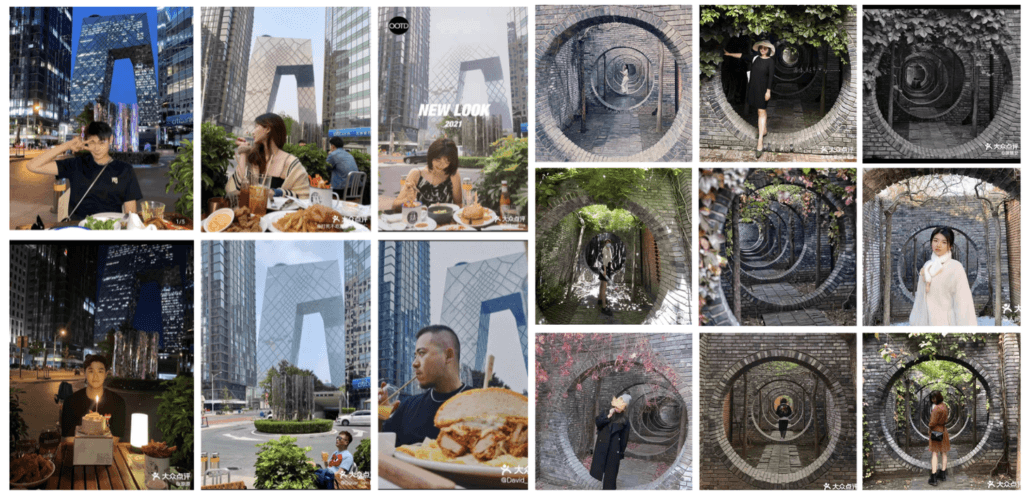
Recent Dianping check-ins at two wanghong Beijing spots — the 京A CBD Taproom and the Red Brick Museum. See: Chaoyang Trap.
As one of Chaoyang Trap’s commentators points out, this is reminiscent of Don DeLillo’s riff in White Noise on the “Most Photographed Barn in America.” In DeLillo’s account, what makes the barn compelling is not the empirical fact of its popularity but that it’s a truth that you yourself can perform and attest to by ritually photographing it yourself. “Being here is a kind of spiritual surrender,” a character named Murray, a sportswriter turned Baudrillardian college lecturer, explains. “We see only what the others see. The thousands who were here in the past, those who will come in the future. We’ve agreed to be part of a collective perception. This literally colors our vision. A religious experience in a way, like all tourism.”
Maybe we’re supposed to take that ironically, but that seems to be the essence of wanghong. “We’re not here to capture an image, we’re here to maintain one,” Murray says. “Every photograph reinforces the aura. Can you feel it, Jack? An accumulation of nameless energies.” One of the reasons I think the Chinese term is useful here is its estrangement effect for Westerners; it can give those energies a name without oversimplifying them.
“They are taking pictures of taking pictures,” Murray remarks. The activity has been lifted out of instrumentality, toward some higher consciousness of itself, overcoming the dialectics of subject and object, individual and collective. One can participate in a collective experience while also asserting the significance of one’s particular, singular perspective. My picture of the barn will look like everyone else’s, but social media let me funnel all that recognizability into my specific profile, making me vicariously salient for a moment. In this way, documentation becomes self-referential; what is documented (the art, the specific experience) becomes a rote pretense, a vestigial appendage to the social fact of the images and their circulation.
Wanghong is the museum effect operating at large. It suggests that museums themselves are no longer necessary to the rituals of visual interest. Where once, the fact that something was in a museum was believed — by curators and museum professionals anyway — to be enough to guarantee its visual interest, now audiences can autonomously decide on their own whether something is interesting enough to be worth sharing. The museum effect pales before memes.
My picture of the barn will look like everyone else’s, but social media let me funnel all that recognizability into my specific profile, making me vicariously salient for a moment
But this also means that try as we might, we can never escape the feeling that we are in a museum no matter where we are. That is to say, the “phone effect” leverages the “museum effect” to organize a collective sense of how things become visually interesting. Social media platforms can be understood as discovery engines for what kinds of visual interest are commercially viable at any given moment. But at the same time, these more or less arbitrary examples of marketable aesthetics are naturalized and dignified by the logic of the museum effect, which establishes the convention of regarding what is visually interesting as beyond the need for any explanation or context.
This maintains a kind of privileged role for museums that doesn’t draw on their archival authority or pedagogical capabilities. They can give the context of contextlessness. For instance, phones allows museumgoers to apply the museum effect to themselves, staging themselves in selfies as visually interesting objects in their own right in the museum alongside all the other interesting things. Instead of taking pictures of taking pictures, one takes pictures of oneself as a particular sort of picture taker.
In the process, the conventional role of the art museum seems to change: It no longer functions as the repository of historically situated precious objects but appears more as a place where visitors can appropriate that legacy on the level of its sheer familiarity. By this logic, phones prompt museums to reorient themselves, to announce themselves as iconic and immediately recognizable tourist attractions so as to maximize the value of the images visitors might circulate of their visits. The museums must commit even more resources to being visually interesting while surrendering the power to choose what sorts of things should be considered as such. Algorithms and metrics online will sort that out.
Hence the emergence of what art critic Ben Davis has labeled “Big Fun Art.” Such work “doesn’t require any historical knowledge, context, or even patience to be enjoyed (except the patience of waiting in a line).” The go-to examples for this are things like Yayoi Kusama’s infinity rooms, the Rain Room, Pipilotti Rist’s installations, Meow Wolf, and so on. The works are the artistic equivalent of “influencers”: their popularity on social media grounds their relevance and constitutes their substance. They draw big crowds, which the museums take as a sign of their own renewed relevance.
But as Davis suggests, you don’t necessarily need a conventional museum with trained curatorial staff to orchestrate these kinds of spectacles. Instead you can just build out some adult-size ball pits, erect some selfie walls, and put out the word that you’ve built a “museum of fun” where attendees can have a variety of photographable experiences. Who is to say those filthy feet submerged in a pool of sprinkles isn’t visually interesting when it’s being liked on Instagram? In light of museums’ abandonment of context, why can’t resonance be wonder?
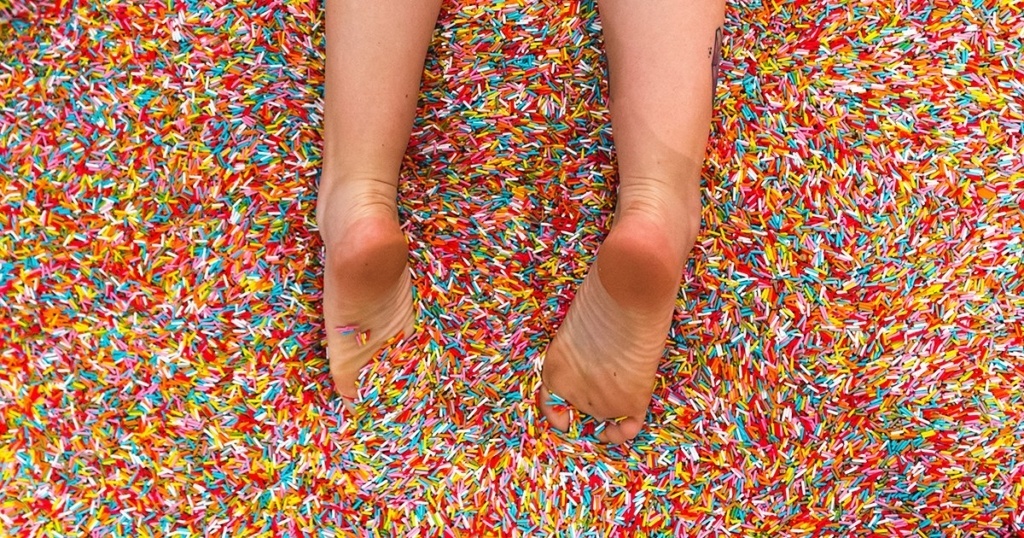
Boris Groys has argued that the contemporary museum has gone from “a space of contemplation” to “a place where things happen” — an event space rather than an archive. Having surrendered its role in assigning authoritative context to what it exhibits, it becomes merely another competitor in the experience economy. The pretense of art is again fully discarded, by the institution as well as the audience.
Or art can be detached from exemplary objects that manifest its formal concerns and redeployed to enhance the value of spectacles, as with the two separate “Immersive Van Gogh” shows on display this summer in New York City. “What a few entrepreneurial exhibitionists figured out,” New York Times art critic Jason Farago explains, “is that many of us are less attached to van Gogh’s paintings than to the mythology that surrounds them. And that you can exhibit for cheap.” Since the art object itself no longer matters, the brand value of an artist may as well be spectacularized and made into its own kind of infinity room.
Technically, these exhibitions are competing with art museums that display actual Van Goghs. But they may also have the inadvertent effect of protecting museums from their own worst impulses by beating them to them.

The immersive experiences literally place visitors “inside the spectacle,” as Groys says, but in this case that should not be taken to mean onstage. Visitors don’t see themselves as actors; they aren’t there to follow a script — the false experience of “agency” that comes from being forced into active participation. They are there instead to capture themselves as a privileged member of a crowd: Their turn in line has come, and they are documenting their momentary centrality to a popular, easy-to-recognize experience.
Still, why bother with Van Gogh instead of ice cream sprinkles? What do audiences want from “immersive Van Gogh”? Is it the “speechless and irreducible quality to great art” that Farago mentions? It’s tempting to claim that art is just intrinsically more interesting, or at least more laden with cultural capital, but that’s just as tautological as the “museum effect” itself: Art objects are more interesting because only interesting things are recognized as art.
The pretense is that “visual interest” is self-evident, beyond debate, outside history as well as any economic or cultural forces at play. But that illusion itself is what museums have learned to produce and profit from. The museum provides its imprimatur to consumerist desires for acquisition, possession, and participation in trends and gives them an alibi in the process, making it seem like those desires are not manufactured but natural, dignified with a long aesthetic history. “Visual interest” is not a “museum effect” then, but a consequence of letting consumerism dictate how “interest” should be construed.
At that 1988 conference, several speakers seemed consternated not over the dangers of consumerism trivializing museums but of museums’ giving too much context to exhibitions and alienating potential audiences. Sometimes this concern took the form of demanding the democratization of the museum by stripping it of its pedagogical missions, which were depicted as excuses to shame some attendees and flatter the pretensions of others. One speaker argued that the “authoritarianism” of having staff members select exhibition objects should be replaced with “an aesthetic smorgasbord that empowered the audience to select for themselves.”
This echoes the strategies of pop artists of the 1950s and ’60s, detailed here by Fintan O’Toole in a review of Louis Menand’s history of that era:
If you look at a Jackson Pollock painting, you don’t know where to focus — the picture has no visual center around which it is organized. In a Rauschenberg combine there is no signal as to which bit matters more than any other. Cunningham decided likewise that a dance did not have to be choreographed around a single point: every angle from which it could be viewed was the “front.”
Now these approaches seem less like challenges to “authoritarian” museum professionals or any other elites and more like banal descriptions of commercial internet culture. In 1988, pandering to audiences with decontextualization was not a bold embrace of the sovereign beholder so much as a response to funding pressures, which necessitated appealing to audiences as consumers, offering them a “free” choice among seductive objects. This, in turn, prompted museums to rationalize consumerist practices with the avant-garde’s erstwhile anti-elitist, pro-experiential ideology, culminating in appeals to “user participation” and “interactivity” largely on the audience’s terms. And that leads directly to encouraging them to use their phones freely, to document exhibitions and do the museum’s job of promoting them, all under the auspices of empowerment.
To experience these things is to document them; if they go undocumented, they weren’t really experienced. By documenting them ourselves, we can participate in this positive feedback loop
But in no case does this freedom mean that audiences then simply become who they are. Rather than indoctrinating audiences in national identities or received ideas about cultural heritage, the museum reinforces their identity as consumers. The attempts to liberate the audience instead empowers the media technology they carry.
In his 2004 talk “The Emancipated Spectator,” Jacques Rancière questioned the idea that curators are in a position to somehow empower or liberate audiences, as though they could show people how not to be shown things, or usher them back to a pure experience of unmediated visual pleasure, or compel them to dissolve into a collective subjectivity, or replace their passivity with activity. “We don’t need to turn spectators into actors,” he declares.
But his alternative sounds more or less like what the museum professionals were proposing in decontextualizing institutions: that audiences be left to “weave their own way through the forest of words, acts, and things that stand in front of them or around them,” as though their response to an overload of stimuli would be self-discovery.
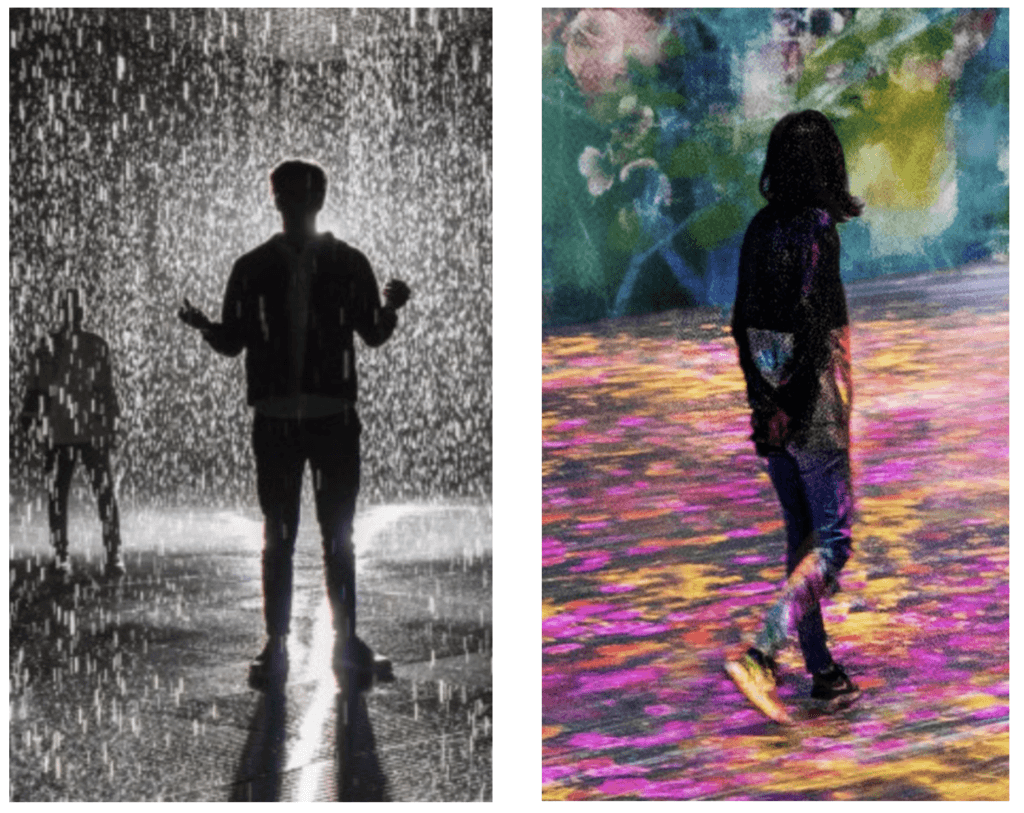
That ideology remains powerfully at work in the internet’s profusion of information. But in practice, the internet’s abundance yields search engines and algorithmic feeds — sorting tools that purport to center users’ agency while circumscribing their curiosity and predicting who they should be and what they should want to know. The line between activity and passivity, between looking and acting, is dissolved as Rancière advocates, but it seems less like emancipation than a new kind of administration.
In theory, museum visitors armed with phones are emancipated spectators: Rather than become “active” on the terms demanded by the institution, they remain distant, engaged on their own terms. The phone allows them to produce their own version of their visit in defiance of both artists and curators and the veiled intention of coercing them into some set of behaviors.
But ultimately, the phone users end up being coerced by the phone itself. Its apps are not only means of production but also new systems for channeling and exploiting what users produce. Recontextualizing experience with a phone’s tools means adopting the prerogatives of social media platforms: You might subvert the intentions of the museum only to replace them with those of Instagram and TikTok. What occurs is a “redistribution of the sensible,” to borrow Rancière’s term, but it’s from the museum to tech companies, not to visitors, who are expected to sense nothing more than their own excitement.
